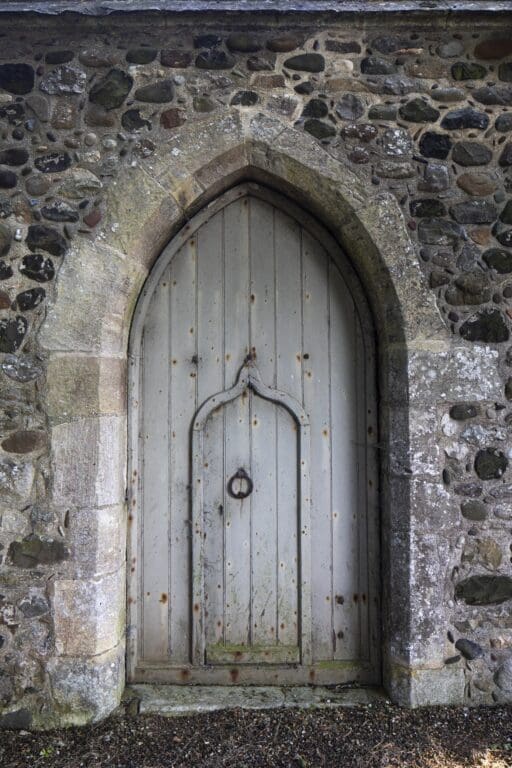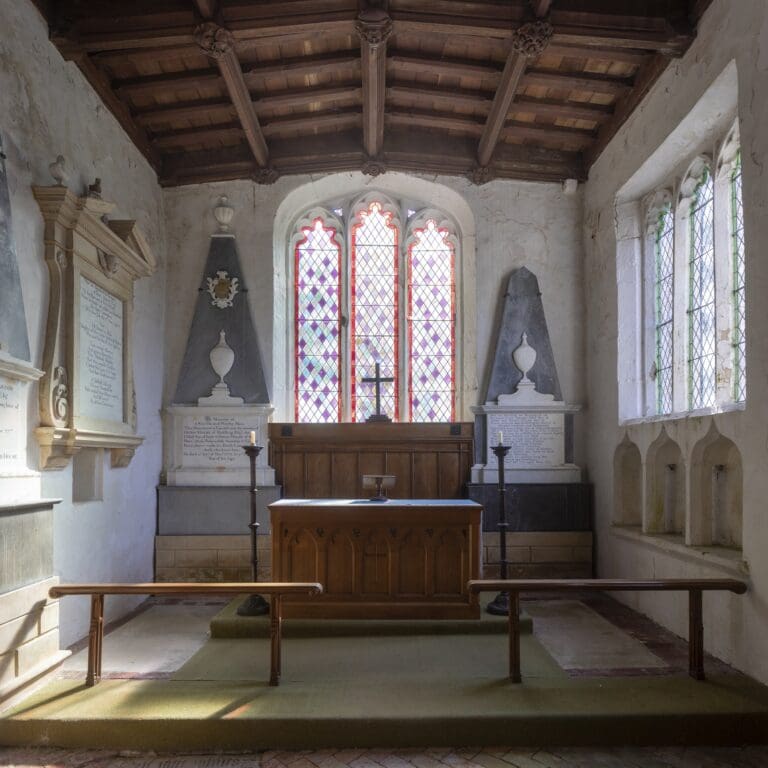
Contact the office for access details: email us / call us: +44 (0)204 520 4458 (Mon-Fri 9am-5pm)
OS grid reference
TA370190
what3words
hero.tiredness.ambitionsRounded cobbles set in rough and random courses with limestone ashlar edges form the nave, chancel, aisles, and tower of this large medieval church
There was an alien monastic cell nearby at Birstall with a chapel dedicated to St Helen, and it’s thought that some of the cobblestones used in the church were recycled from here. Birstall Priory was built c.1219 on the riverbank between Skeffling and Weeton. It was ruinous by 1720, and disappeared following floods in the early 20th century.
St Helen’s church dates from the mid-1460s, and survives very much true to its original form. The church is entered via the red brick porch with pantile roof. This was tacked on to the south aisle in the 19th century.
Inside, the brick pamment floor ripples, reminiscent of the area’s landscape of mounds, ridges, and kettle holes. The nave is supported by an arcade of octagonal piers, with finely carved angels carrying shields and lions on the responds. Look closely at the piers, and you will find a range of mason’s marks.
In the chancel, is a plain triple sedilia with chamfered ogee arches, but really this space is dominated by the monuments to the Holme family. The Holmes owned the manor house to the north of church from the 17th century. There are floor slabs and wall monuments – most are monochrome marble obelisks with urns and palms, and all are the work of Rushworth of Beverley.
St Helen’s came into our care in August 2021. Thanks to a grant from the Culture Recovery Fund we were able to address significant structural issues affecting this Grade I listed church immediately; after stabilising the movement to the west of the building and repairing the internal plasterwork, the church reopened to visitors in 2022.




The buttons below link to church or local information on other websites.